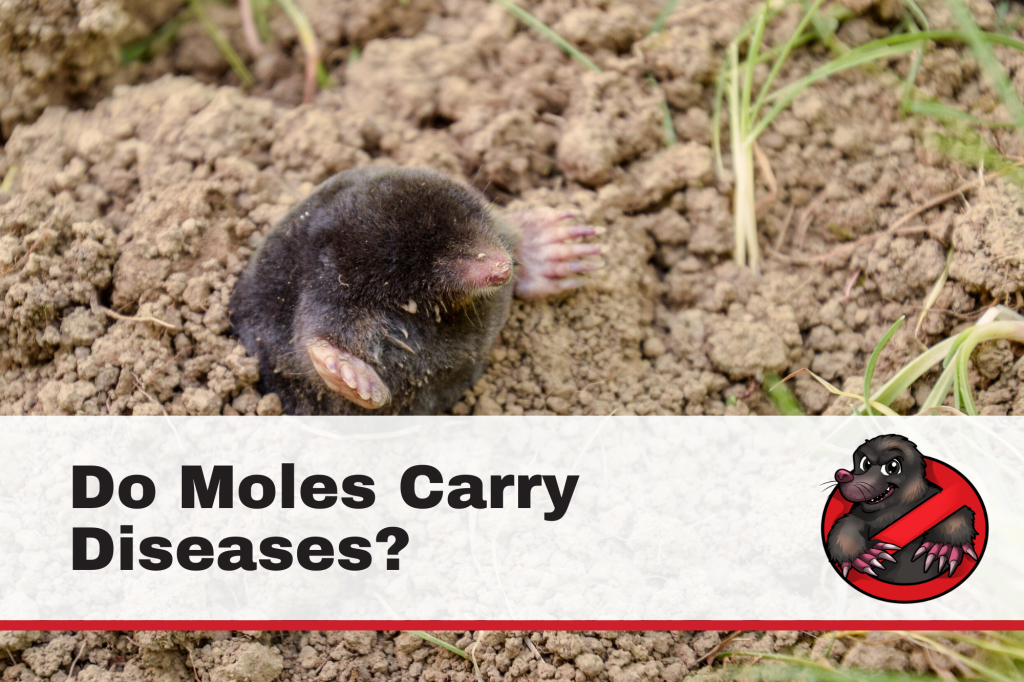
Do Moles Carry Diseases?
Moles are solitary creatures that spend most of their lives underground, creating extensive tunnel systems in search of food, primarily insects and grubs. Due to their subterranean lifestyle, direct contact with moles is relatively rare, and they are less likely to come into close contact with humans compared to other wildlife. However, if you’re dealing with a mole infestation, you may be more concerned about their potential risks. Do moles carry diseases? For the most part, the answer is no.
Potential Diseases Associated with Moles: Health Risk Assessment
While moles themselves do not generally carry disease that directly infects people, there are a few considerations to keep in mind:
Leptospirosis: This bacterial infection can be transmitted to humans through the urine of infected animals, including moles. However, the risk of contracting leptospirosis from moles is quite low since it requires direct contact with contaminated water or soil. The disease itself is rare, though dogs and outdoor pets are at higher risk, as they may be more likely to come into contact with contaminants. While it is unlikely, moles can spread Leptospirosis by peeing on you, so be careful when handling one.
Parasites: Moles can host various parasites, such as fleas, ticks, and mites. These parasites can sometimes transfer to pets or humans if they come into contact with an infested mole. While the risk is minimal, it’s a good practice to monitor pets for any signs of parasite infestations, especially if they spend a lot of time outdoors. Ticks can transmit Bartonella and Lymes disease, which can infect humans.
Do Moles Carry Rabies?
Moles do not typically carry rabies and are not generally considered a rabies bite risk. It is theoretically possible, though there have been no reported cases. Most rabies cases involve bats, dogs, skunks, foxes, and raccoons. It is still possible to be bitten by a mole, and mole bites can cause other types of infection. If you’ve been bitten by a mole, be sure to clean and disinfect the wound and monitor it for signs of infection. If you plan on touching moles, you may want to wear protective gloves to prevent bites and avoid contact with the skin.
Managing Mole Infestations
The overall health risk posed by a mole infestation is low, but moles are still wild animals that can damage your home, garden, or plants:
-
Professional Mole Control: At Got Moles?, we offer safe and effective mole control services to help manage and reduce mole populations on your property. Our pest control and removal methods are designed to minimize harm to both the environment and other wildlife.
-
Maintaining a Clean Yard: Regular yard maintenance can help deter moles from settling in. This includes removing excess organic material, such as piles of leaves or grass clippings, and ensuring that your lawn is well-drained.
-
Pet Precautions: Keep an eye on your pets, especially if they dig or explore molehills. Regular grooming and flea/tick prevention treatments can help reduce the risk of parasite transfer.
While moles are not significant carriers of diseases that directly threaten human health, it’s always wise to take preventive measures to avoid any potential risks. By understanding mole behavior and employing effective control strategies, you can keep your yard mole-free and reduce the likelihood of any associated health concerns.
At Got Moles?, we are committed to providing reliable and effective solutions for mole control in Western Washington. If you have any concerns or need assistance with a mole infestation, don’t hesitate to contact us. Let’s work together to keep your yard safe and healthy!
For more information or to schedule a consultation, visit our website or give us a call. Together, we can ensure a mole-free environment for you and your family.


